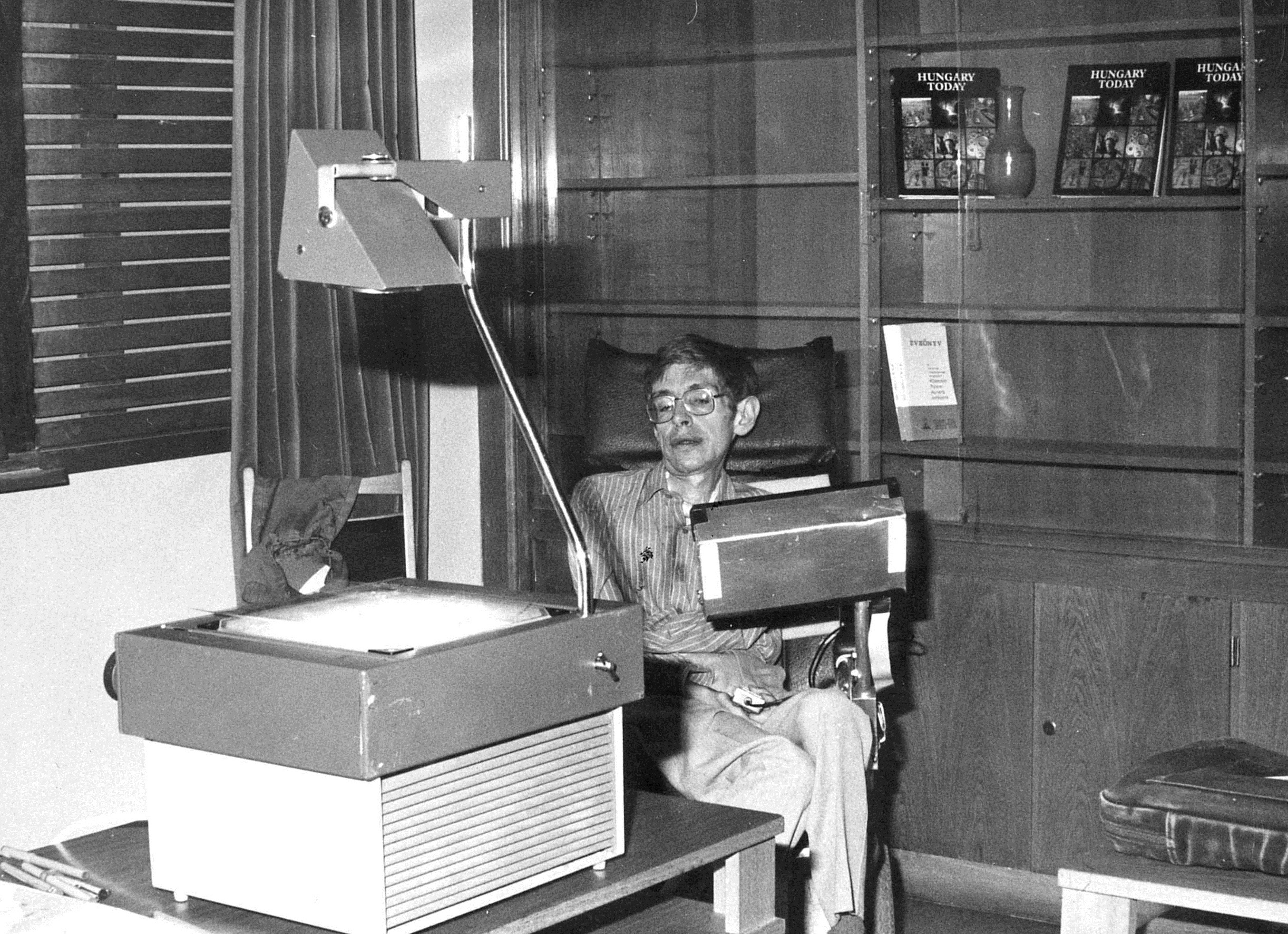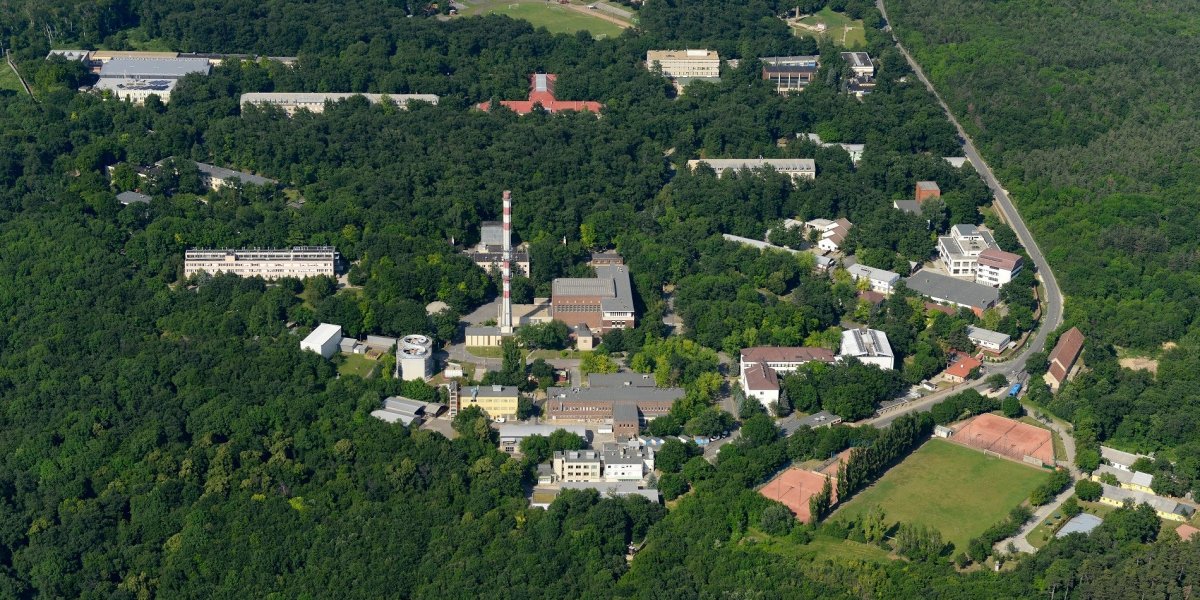One of the largest scientific institutions in Budapest was opened 70 years ago on 1 September 1950. Currently, the KFKI campus houses the two largest physics research institutes in the country, the Centre for Energy Researcher and the Wigner Researcher Centre for Physics operated by the Eötvös Loránd Research Network (ELKH).
The KFKI was set up extremely quickly. The institution was operation less than a month after the decree passed by the Council of Ministers on 18 August 1950. When founded, the foal was to ensure research in physics become a leading branch of Hungarian science.

A bird's eye view of the KFKI (Source: Természet Világa, 2011, special issue 1)
Naturally, the decision had a political dimension. Following World War II politicians had recognised the importance of physics. Fearing the imminent third world war Hungarian politicians viewed the creation of the institute an urgent matter, as by 1945 it was evident that research into physics was fundamental to military success, as proven by radar and the atomic bomb.

Work underway at in KFKI (Source: KFKI Photograph Collection)
The Hungarian Academy of Sciences was named the supervisory body and created the operational method of the KFKI. Schools of thought and research hubs were organised around experienced theoretical and practical physicists. The approach ensured not only research but training. Early on nuclear physics and materials research were placed in focus. Later, this shifted towards atomic physics, radiology and cosmic radiology. Beyond research, the building also became a cultural hub. The Hungarian National Radio recorded the 1976 New Year's Eve Radio Cabaret on the campus.

The management of KFKI in 1955. Centre: István Kovács, director, to the right: Lajos Jánossy, to the left: Károly Simonyi deputy directors (Source: Természet Világa, 2011, Special issue 1)

Recording the Radio Cabaret for New Year's Eve 1976. Actor Béla Tímár and writer Sándor Fekete pictured in the KFKI (Photo: Fortepan/No.: 147946)
Nuclear reactor above the city
The next significant development happened in 1955 when the decision to install the experimental nuclear reactor purchased from the soviet union here was made. The National Atomic Energy Commission joined the MTA as a supervisory body. The Budapest Experimental Reactor began operation in 1959 and remains an essential tool in Hungarian atomic research. The Soviet reactor originally output 2.5 MW which was increased to 10 MW in 1990. For comparison, Hungary's nuclear power plant in Paks outputs 2000 MW.

The Experimental Reactor being put in operation (Source: Természet Világa, 2011, special issue 1)

Researchers monitoring the first start up of the reactor (Source: Természet Világa, 2011, special issue 1)

One of the building in the KFKI (Source: KFKI Photograph Collection)
Great emphasis was placed on safety, and several monitoring instruments were installed to prevent radiation from entering the environment. The 9 April 1959 issue of Népszabadság wrote about the impact of the reactor: "The whole system has been planned to ensure that even in the worst-case weather scenario the radiation output by the system should not exceed the radiation of an everyday luminous watch face."
KFKI researchers played a significant role in Hungary joining the European Organisation for Nuclear Research, commonly known as CERN. The Wigner data-centre was completed in cooperation with them in 2012 and continues to provide high-quality IT services for research in Hungary.

Party Secretary János Kádár, visited the KFKI Experimental Reactor several times accompanied by various guests (Source: Természet Világa, 2011, special issue 1)

The Experimental Reactor in the 2000s (Source: Természet Világa, 2011, special issue 1)
Pioneers of Hungarian space exploration
The team at the research institute also participated in space research. In 1978 they created the Pille radiation dosimeter. The device was installed on the Challenger Space Shuttle, aboard which Sally Ride used in 1984. It was thus the first Hungarian instrument to be used on an American spaceship. Pille is used to the present day on the International Space Station.

Hungarian astronaut Bertalan Farkas uses a Pille in his spaceship (Source: KFKI Photo Collection)

Sally Ride sent thanks to Hungarian researchers for the dosimeter (Source: KFKI Photograph Collection)
The most extensive space research programme Hungary has participated to date was the Venus-Halley (VEGA) project, which began in the 1980s. As part of this, probes were launched, which approached a fast-moving comet to collect data. One-third of the instruments on the probes were created in Hungary, many of them within the KFKI. One of the largest scientific success stories in Hungary in the early 2000s was when four researchers of the KFKI were recognised by NASA for their contribution to the exploration of space around Earth.

A Pille device and thanks from an astronaut (Source: KFKI Photograph Collection)
Visited by world-renowned scientists
The KFKI was always proud of the quality of research conducted within its walls, and none of it would have been possible without the outstanding researchers that worked there. It is no surprise that internationally and domestically respected scientists visited the Center often. These included several Nobel-laureates, such as Heisenberg, Dirac, Cockroft, Born, Prohorov, Schrödinger, Raman, Blackett, Mössbauer, Bethe or Jenő Wigner.
.jpg)
Lajos Jánossy with two Nobel-laureates, Mac Born and Erwin Schrödinger (Source: Természet Világa, 2011, special issue 1)
%20%C3%A9s%20Szent%C3%A1gothati%20J%C3%A1nossal%20%C3%A9s%20a%20Nobel-d%C3%ADjas%20Akejszandr%20Prohorovval%20(jobb%20oldalt).jpg) Director Pál Lénárd talks with Nobel Prize winner Jenő Wigner on the left, and with János Szentágothai and the Nobel-prize winning Alexander Prokhorov on the right (Source: Természet Világa, 2011, Special issue 1)
Director Pál Lénárd talks with Nobel Prize winner Jenő Wigner on the left, and with János Szentágothai and the Nobel-prize winning Alexander Prokhorov on the right (Source: Természet Világa, 2011, Special issue 1)
The hugely popular Stephen Hawking also visited the KFKI on 1 September and gave a lecture. Népszabadság reported on his arrival in its 2 September 1987 issue: "We bring the greatest minds to our doorstep – this could be the motto of the Workshop for International Theoretical Physics which has been working within the Central Institute for Physics Research since 1983. The Hungarian Academy of Science created the less formal platform to facilitate closer cooperation and to promote the exchange of knowledge. One of this year's seven events will be the Workshop on the Theory of Relativity, the second such event, after the first in 1985. The event in Budapest between September 1–4 will be attended by 38 researchers from 12 countries who will present their latest scientific results. To the organisers' delight, Stephen W. Hawking, the world-renowned professor of the University of Cambridge, will also attend the meeting. 'Sorry for my American accent,' says the high-quality speech synthesiser in place of the smiling Professor Hawking as he sits in his wheelchair after mutual greetings."

Stephen Hawking gave a lecture at the KFKI in September 1987 (Source: KFKI Photograph Collection)
The institution has been reorganised several times since then. Those who continue to work here carry on its legacy of outstanding research, an approach that has been proven by several major scientific results over the last 70 years.
Cover photo: The KFKI campus from above (Source: KFKI Photograph Collection)





































Hozzászólások
Log in or register to comment!
Login Registration